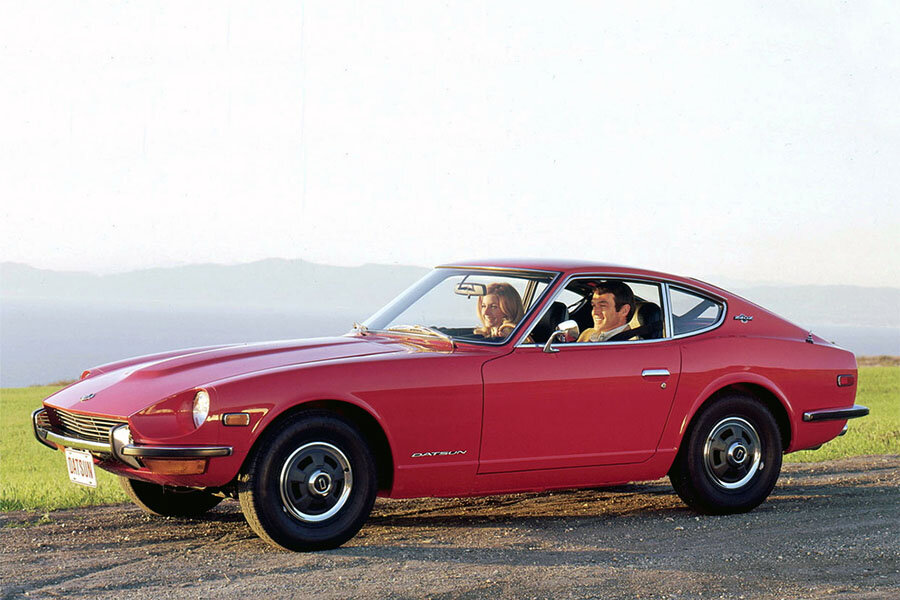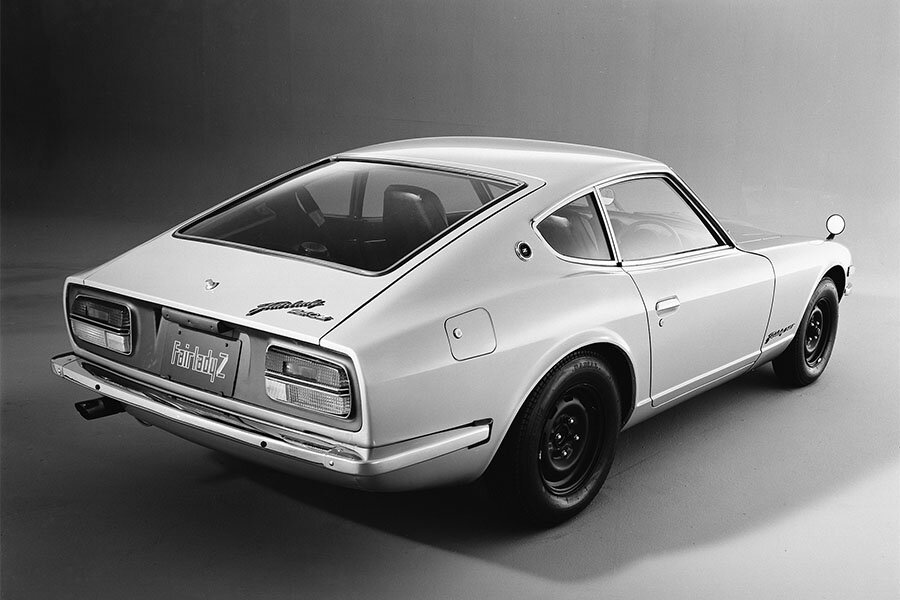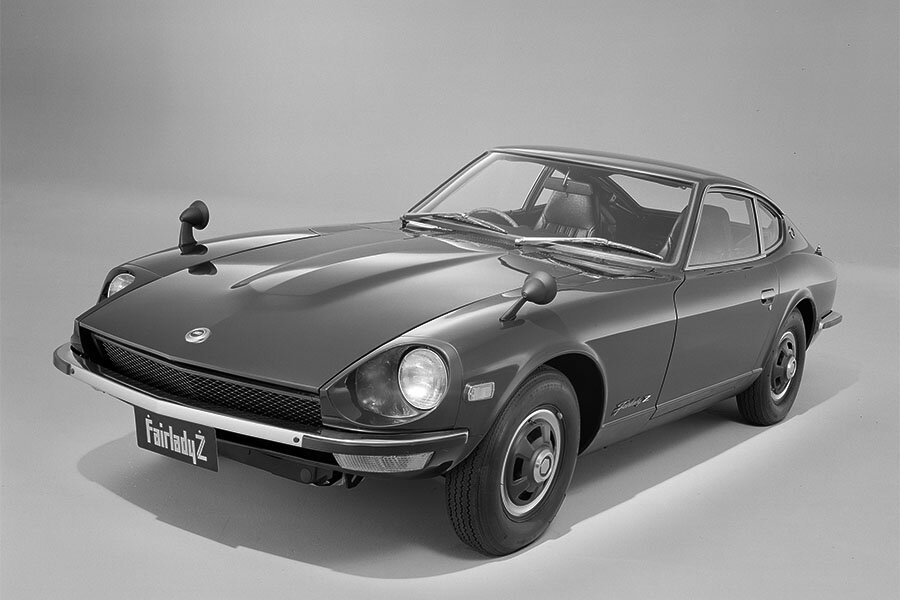Guide: Nissan Fairlady Z & Datsun 240Z (S30) - a Historical & Technical Appraisal
/BACKGROUND
During the 1960s, Nissan produced a range of open two-seaters to include the Fairlady 1500, 1600 Sport and 2000 Roadster. These were a commercial success, particularly in the USA, where they were seen as inexpensive rivals to the likes of MG, Triumph, Fiat and Alfa Romeo.
In late 1966, work also began on a more upmarket Gran Turismo that would further enhance Nissan’s image.
Nissan had already produced the Silvia 1600 Sports Coupe, which was introduced at the 1964 Tokyo Motor Show. However, with just 554 produced (nearly all of which were sold domestically), the 1.6-litre inline four cylinder model proved a commercial flop.
Around the same time, a collaboration with Yamaha was also abandoned as the proposal did not meet Nissan’s expectations.
Yamaha went on to partner with Toyota for the project and the iconic 2000 GT was born.
While the 2000 GT went down in history as Japan’s first sports car icon, Toyota lost money on every car they sold. From a financial perspective, Nissan were right to have walked away.
The company instead chose to develop their own sports GT designed squarely for the lucrative US market.
Launched at the Tokyo Motor Show in October 1969, the new car was sold in the Japanese Domestic Market (JDM) as the Nissan Fairlady Z and elsewhere as the Datsun 240Z.
Because of punitive taxes levied on vehicles sold in Japan with a capacity greater than two-litres, the Fairlady Z was equipped with a 1998cc motor while the engine in the 240Z displaced 2393cc. Otherwise, the two variants were practically identical.
Designed by Nissan’s Sports Car Styling Studio, the Z was equipped with a sleek two-seat Coupe body, a straight six engine and rear-wheel drive. Its handsome looks, modern engineering, relatively low price and impressive performance saw it become an international best seller that did wonders for Nissan’s image.
CHASSIS
Built around a pressed steel monocoque, the Z came with fully independent suspension.
The front end comprised MacPherson struts with lower transverse links, drag links and an anti-roll bar. At the rear were Chapman struts and lower wishbones. Coil springs and telescopic dampers were fitted all round.
Braking was courtesy of discs up front and drums out back.
14 x 4.5-inch steel wheels were fitted with stylised hub cabs (apart from non-L JDM variants which used unadorned steel rims).
A 60-litre fuel tank was installed underneath the rear storage compartment.
ENGINE / TRANSMISSION
In the engine bay was Nissan’s single overhead camshaft straight six. It featured a cast-iron block and an aluminium alloy head with two valves per cylinder.
The two-litre L20 unit fitted to the JDM Fairlady Z displaced 1998cc thanks to a bore and stroke of 78mm and 69.7mm respectively.
Compression was 9.0:1 and two SU-type Hitachi HJG 46W sidedraught carburettors were fitted.
Peak output was 130bhp at 6000rpm and 127lb-ft at 4400rpm.
For the 240Z, Nissan used their L24 engine which had a capacity of 2393cc. Bore was increased from 78mm to 83mm and the stroke was extended from 69.7mm to 73.7mm.
Compression and fuel feed were identical to the L20 unit.
Output rose to 151bhp at 5600rpm and 146lb-ft at 4400rpm.
A five-speed gearbox was usually fitted, although 240Zs destined for North America came with a four-speed unit instead.
BODYWORK
Styling-wise, the Z was unapologetically inspired by the Jaguar E-type, a car that Enzo Ferrari had famously described as the most beautiful in the world.
Single headlights were set back from the nose in fibreglass bowls either side of a wide rectangular intake that fed fresh air to the radiator and engine bay.
The long hood was home to an artistically crafter power bulge.
Slim pillars meant visibility out of the fastback cabin was excellent; the window frames were stainless steel like most of the brightwork.
The Kamm tail fascia was painted Datsun Grey.
Delicate chrome bumpers came with rubber inserts on the corners and overriders. Non-L JDM variants came with plain bumpers.
INTERIOR
Nissan ensured the interior was just as visually appealing.
A wood-rimmed three-spoke steering wheel fronted two primary cowls that were home to a rev counter and speedometer.
Three smaller cowls were mounted above the centre of the dash. These housed a clock and combined gauges for battery amps / fuel and oil temperature / water temperature.
The central console directly below contained the ventilation controls and a radio.
Vinyl leatherette was used to upholster the seats, side panels and gear gaiter with carpet pretty much everywhere else.
The large rear hatch was supported by two gas-filled struts. Once opened, it provided a generous amount of luggage space. Two straps helped secure any load in place.
VARIANTS
Initially, three versions of the two-litre Fairlady Z were offered: the entry level S30S (Fairlady Z) and the slightly better equipped S30 (Fairlady Z-L).
There was also the high performance PS30 (Fairlady Z432) that used the four-valve, triple carb, dual overhead camshaft engine from the C10 Skyline GT-R.
The Z432 is covered separately.
All Fairlady Zs were built in right-hand drive.
The Datsun-badged 240Z was available in both left-hand drive (HLS30) and right-hand drive (HS30).
WEIGHT / PERFORMANCE
Fairlady Zs typically weighed in at 1025kg.
The 240Z was 1057kg in North American trim and 1040kg for most other markets.
All Zs had a top speed in excess of 125mph and 0-62mph time of around eight seconds.
PRODUCTION BEGINS
Production started at Nissan’s Shatai factory in Tokyo during October 1969.
The Z garnered rave reviews from road testers and customers alike.
Dealers soon had long waiting lists; in the US, cars quickly began to trade at a premium over list and prices remained at elevated levels until production was coming to an end.
PRODUCTION CHANGES
A series of developments were made during the car’s life. These were always applied to US market Zs and, while machinery destined for other markets generally followed suit, this was not always the case for JDM variants.
In September 1970, Nissan introduced a three-speed automatic option. Cars equipped as such came with a ‘Nissan Full Automatic’ badge on the tailgate.
From February 1971, the two horizontal vents located below the rear window on the rear hatch were deleted as customers complained of exhaust gases entering the cockpit. Instead, vents were discretely added to each sail panel as part of a new circular ‘Z’ emblem.
Other changes made at the same time included faster windscreen wipers, bigger sun visors, a two-stage door check link, a new steering wheel (with holes instead of indents), redesigned ventilation controls, HR instead of SR-rated tyres and a recalibrated oil pressure gauge.
Seat belts were changed to a button instead of latch-type release, a hood was added to the map light to reduce glare and speedometers started at 0 instead of 20.
Seats with tilting backs were a new option.
In October 1971, the tilting seats were made standard. Nissan introduced new flat face hub caps with soft triangular openings and a Z emblem instead of the original curved rectangles with a D emblem. The wheels themselves were widened from 4.5 to 5-inches. Inside, the centre console was redesigned and the fuel filler cap latch was deleted.
As a result of requests from potential customers, Nissan began to offer the 240 Z in Japan from November 1971. Like the two-litre Fairlady Z, the JDM 240 was available in standard Z trim (HS30S) or the slightly more upmarket Z-L configuration (HS30). A long-nosed and wide fendered 240 ZG (HS30H) was also brifely offered as a Group 4 homologation special (covered separately).
From January 1972, automatic seat belt retractors were fitted along with a buzzer and light to warn if the belts were not fastened. Around the same time, the heated rear window was switched from vertical to horizontal elements.
The final round of updates arrived in August 1972 with a series of changes for US variants that mostly focused on improved safety and emissions.
New flat instead of domed carburettors were fitted along with a different E-88 head. Externally, 5mph impact bumpers were added and the headlight bowls were switched from fibreglass to steel. Flame retardant upholstery was now used along with a new hazard warning light switch, backlit heater / ventilation controls and an intermittent wash / wipe setting.
Production continued for another year before the 2.6-litre 260Z arrived.
END OF PRODUCTION
The last two-seat 240Z was manufactured in August 1973.
A long wheelbase 2+2 GS30 240Z was subsequently manufactured until 1978.
The Z was one of the most commercially successful sports cars ever produced.
In terms of the export model, around 168,000 240Zs were produced between 1969 and 1973. Just over 4200 right-hand drive examples were delivered to the UK and Australia.
If anyone has production numbers for JDM Zs, please let us know.
Text copyright: Supercar Nostalgia
Photo copyright: Nissan - https://www.nissan-global.com


































